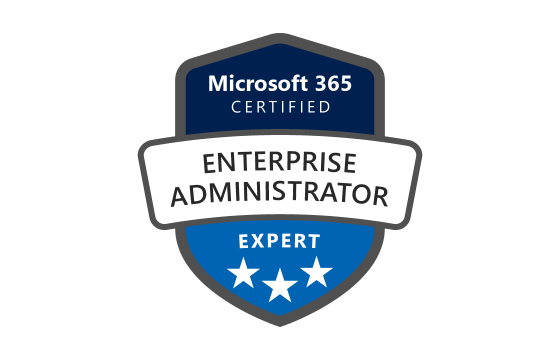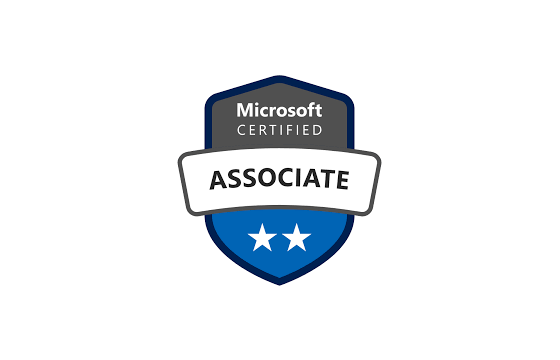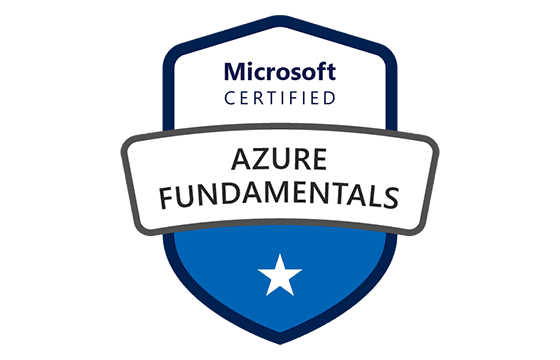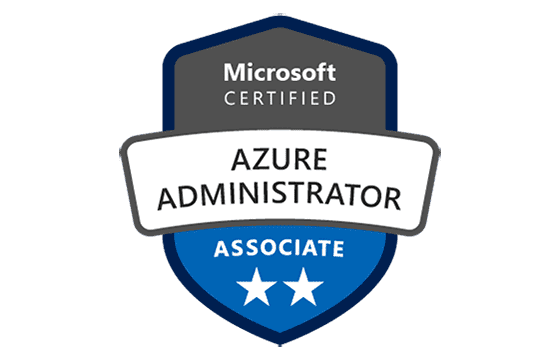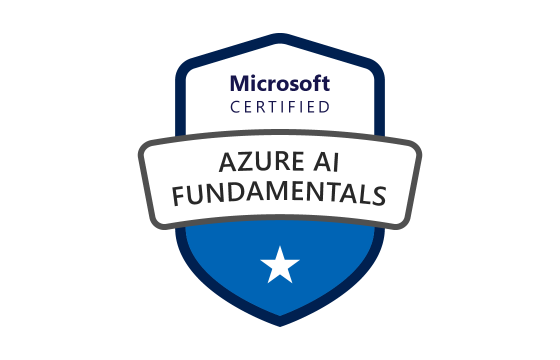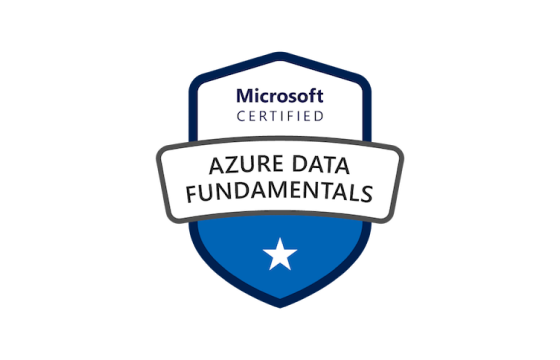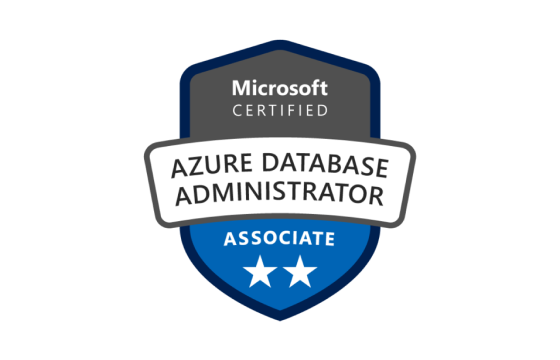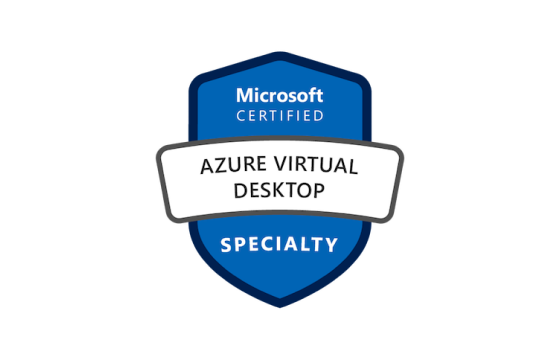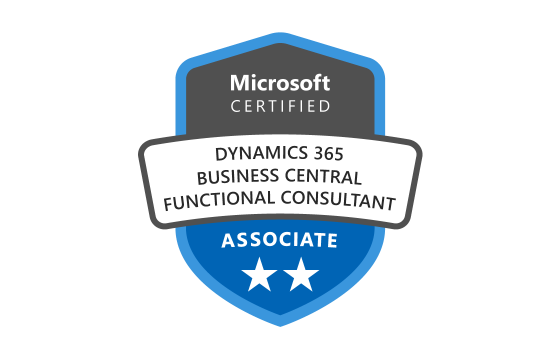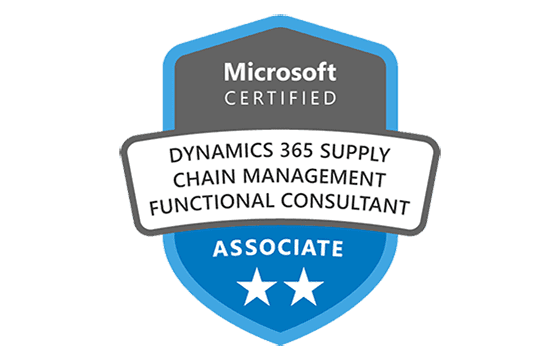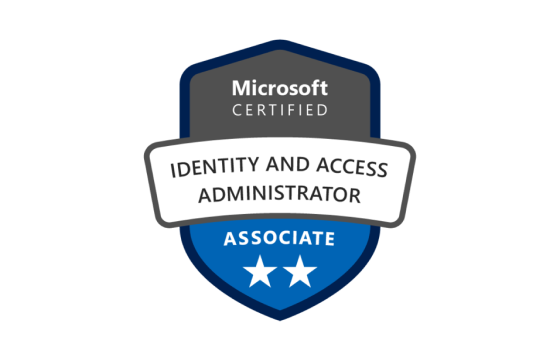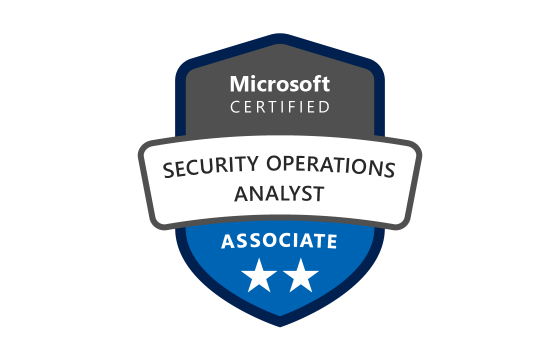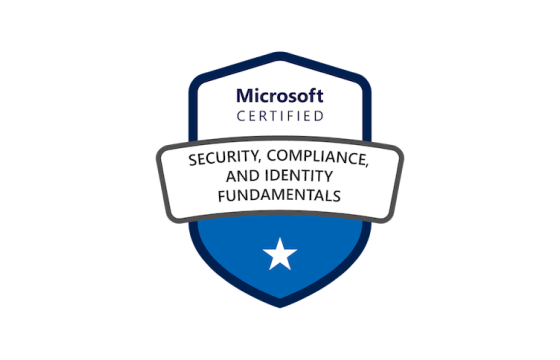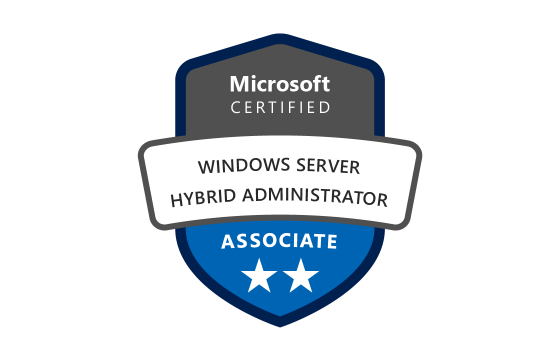Pass Your Microsoft 70-693 Exam Easy!
Microsoft 70-693 Exam Questions & Answers, Accurate & Verified By IT Experts
Instant Download, Free Fast Updates, 99.6% Pass Rate
Microsoft 70-693 Practice Test Questions in VCE Format
| File | Votes | Size | Date |
|---|---|---|---|
File Microsoft.Certexpert.70-693.v2013-05-09.by.hofe.140q.vce |
Votes 13 |
Size 1.44 MB |
Date May 13, 2013 |
File Microsoft.SelfTestEngine.70-693.v2013-01-19.by.Examer.110q.vce |
Votes 1 |
Size 1.25 MB |
Date Jan 20, 2013 |
File Microsoft.SelfTestEngine.70-693.v2012-08-29.by.Catalan.145q.vce |
Votes 1 |
Size 1.44 MB |
Date Aug 29, 2012 |
File Microsoft.Certkey.70-693.v2012-04-25.by.Mia.135q.vce |
Votes 1 |
Size 1.43 MB |
Date Apr 26, 2012 |
File Microsoft.Certkey.70-693.v2012-03-15.by.Richard.141q.vce |
Votes 1 |
Size 1.44 MB |
Date Mar 15, 2012 |
File Microsoft.Pass4Sure.70-693.v2012-02-28.by.JB.126q.vce |
Votes 1 |
Size 1.29 MB |
Date Feb 28, 2012 |
File Microsoft.Pass4Sure.70-693.v2012-01-06.by.DND.126q.vce |
Votes 1 |
Size 1.29 MB |
Date Jan 06, 2012 |
Archived VCE files
| File | Votes | Size | Date |
|---|---|---|---|
File Microsoft.Pass4Sure.70-693.v2011-12-20.by.Vector.126q.vce |
Votes 1 |
Size 1.29 MB |
Date Dec 20, 2011 |
File Microsoft.BrainDump.70-693.v2011-11-12.by.someone.133q.vce |
Votes 1 |
Size 465.04 KB |
Date Nov 21, 2011 |
File Microsoft.Certkey.70-693.v2011-06-09.by.Carvel.45q.vce |
Votes 1 |
Size 162.68 KB |
Date Jun 09, 2011 |
File Microsoft.SelfTestEngine.70-693.v2010-11-29.by.DrDoom.45q.vce |
Votes 1 |
Size 204.17 KB |
Date Nov 29, 2010 |
File Microsoft.SelfTestEngine.70-693.v2010-08-04.by.Penny.48q.vce |
Votes 1 |
Size 166.37 KB |
Date Aug 05, 2010 |
File Microsoft.SelfTestEngine.70-693.v2010-05-26.by.JarodThePretender.45q.vce |
Votes 1 |
Size 197.01 KB |
Date Jul 13, 2010 |
Microsoft 70-693 Practice Test Questions, Exam Dumps
Microsoft 70-693 (Pro: Windows Server 2008 R2, Virtualization Administrator) exam dumps vce, practice test questions, study guide & video training course to study and pass quickly and easily. Microsoft 70-693 Pro: Windows Server 2008 R2, Virtualization Administrator exam dumps & practice test questions and answers. You need avanset vce exam simulator in order to study the Microsoft 70-693 certification exam dumps & Microsoft 70-693 practice test questions in vce format.
Understanding Advanced Enterprise Architecture for Secure Microsoft 70-693
The evolution of secure enterprise messaging has reached the point where organizations cannot rely on ordinary email systems and improvised configurations. The modern corporate world communicates, negotiates, authorizes, approves, and transfers knowledge through digital correspondence. This communication must remain resilient, confidential, retrievable, and fully governed. To accomplish this, companies invest in structured messaging architecture driven by the technologies of a well-known vendor that shapes the global messaging ecosystem. The standards set by their advanced certification programs, including certifications that revolve around expert-level design like 70-693, helped define how enterprise messaging should be planned, structured, and defended against disruption. These certifications are not just academic symbols. They represent real-world mastery in building environments capable of sustaining uninterrupted communication even under relentless pressure.
In the earliest era of digital mail systems, a few servers and a simple relay chain could sustain the needs of most organizations. As threats evolved, as user counts multiplied, and as legal expectations tightened, the landscape changed dramatically. Companies began demanding unbreakable security, resilient databases, fault-tolerant clusters, cloud integration, mobility, auditing, and automated disaster recovery. Communication became a resource that must remain available at every moment of every day. When even a few minutes of outage could halt executive decisions, delay financial transactions, or interrupt client negotiations, downtime became unacceptable. Professionals who pursued advanced qualifications through paths such as 70-693 demonstrated that they could design architectures capable of outmaneuvering failure, intrusion, hardware malfunction, and environmental catastrophe.
Every advanced messaging solution begins with identity. Directory services authenticate users, apply permissions, and regulate access to confidential content. If the directory collapses, authentication fails, mailbox queries slow, and mail flow may halt entirely. Designing a reliable directory structure requires schema planning, trust relationships, synchronized identity repositories, and accelerated query performance. Architects trained at the level reflected in 70-693 understand that identity is not a passive component. It is the gatekeeper of the entire messaging universe. When identity is strong, messaging remains seamless. When identity wavers, everything else collapses with it.
Beyond directory services lies the transport pipeline. The transport system of a messaging platform is the invisible highway where messages travel from sender to recipient, sometimes passing through multiple protection layers. It must ensure privacy, authenticity, antispam defense, antimalware interception, content inspection, routing logic, and encrypted handshakes. Engineers who master the skills tested in 70-693 know the difference between a transport system that simply moves mail and a transport system that shields corporate secrets. A poorly built system might deliver mail, but it also exposes vulnerabilities. A well-architected system neutralizes malicious attachments, detects spoofed identities, and ensures that confidential communications cannot be intercepted or altered. The vendor’s technologies have been centered on creating a transport engine that integrates filtering, encryption, digital signatures, compliance scanning, and protocol intelligence.
While transport delivers messages, the database preserves them. Everything that employees send and receive eventually resides in a mailbox database. These repositories hold years of corporate memory. They contain financial approvals, legal strategies, human resources communication, client negotiations, and intellectual diagrams. Losing this data would be equivalent to corporate amnesia. Architects trained in the competencies associated with exams like 70-693 are not allowed to leave mailboxes vulnerable. They build clusters, replicated copies, geo-distributed nodes, and redundant storage frameworks. If a server fails, another takes its place instantly. If a drive crashes, data rehydrates from a replica. Users remain unaware because the architecture hides disaster behind automated recovery.
High availability is not only a technical matter; it is a cultural expectation. Modern executives expect their mailboxes to function at all times. They do not want excuses about failed hardware or misconfigured routing. They do not wait for maintenance windows. They expect constant uptime. The vendor’s enterprise messaging platforms support these expectations, but only when designed by architects with strategic awareness. The principles taught through advanced certification, like 70-693, emphasize that you cannot rely on a single transport server, a single mailbox database, or a single data center. You must anticipate failure. You must predict disaster. You must eliminate single points of collapse so thoroughly that the organization forgets failure is possible.
Security is the invisible force that protects communication. Every enterprise negotiates confidential themes behind the scenes: merger plans, settlement documents, revenue analytics, source code, research formulas, and proprietary inventions. A breach could ruin reputations and destroy advantage. Defending these communications requires layered security: protected transport, encrypted connections, secure authentication, permission-based access control, audit trails, logging, policy enforcement, malware scanning, and archiving for legal integrity. Professionals aligned with the advanced philosophy behind 70-693 understand that security is a living organism. It does not remain static. Threats evolve. Attackers innovate. Architecture must adapt.
Hybrid communication environments have become prominent because they merge on-premises control with cloud flexibility. Users operate mailboxes from remote countries, mobile hotspots, airports, and collaborative work hubs. Administrators gain scalable storage without purchasing physical hardware. Compliance officers gain massive search capability across repositories. But hybrid systems are delicate. One poorly configured connector, one identity mismatch, or one failed synchronization job can break routing in unpredictable ways. The experts tested through 70-693 know how to build coexistence without chaos. They manage cloud authentication, directory replication, encryption boundaries, and migration flow so that users never encounter broken communication.
Mobile messaging adds another challenge. Employees carry the corporate mailbox in their pockets. If a phone is stolen, attackers may try to access sensitive correspondence. To prevent this, enterprise architects enforce device compliance, remote wipe, controlled synchronization, and encrypted channels. Without these protections, confidential information could leak through something as simple as a misplaced phone in a taxi. Advanced messaging architects remember that security follows the user. It does not stop at the firewall.
Governance is the final invisible layer. Laws, regulators, auditors, investigators, and courts may demand a full reconstruction of communication history. Large corporations are required to preserve data, demonstrate integrity, and prove that messages have not been destroyed. Architects versed in the spirit of 70-693 implement retention policies, litigation holds, journaling repositories, and verified archiving. When legal demands arrive, the organization responds confidently. They do not panic or scramble for missing information. Their messaging architecture already protects truth.
The complexity of designing such an ecosystem is why advanced certifications exist. The vendor introduced expert-level credentialing, such as 70-693, to separate basic administrators from true messaging architects. It signified mastery in conceptual planning, server topology, database resilience, transport security, hybrid architecture, disaster recovery, mobility, governance, and compliance. A person who passed such an exam demonstrated not only knowledge, but intellectual discipline. They proved that they can transform corporate messaging from a fragile system into a fortified fortress of communication.
Organizations that rely on expert messaging architects thrive. Their employees communicate without fear of interruption. Their executives approve strategies without delays. Their legal teams maintain defensible records. Their systems survive attacks that would cripple weaker infrastructures. Every email becomes a guaranteed asset, not a gamble. The vendor’s technologies empower companies, but only in the hands of professionals who understand the philosophy of design demonstrated by exams like 70-693.
A reliable messaging infrastructure is more than simple server administration. It is an engineering discipline rooted in logic, anticipation, protection, and scientific architecture. The enterprise messaging world respects those who can transform ordinary communication into a resilient, compliant, high-momentum digital engine. That expertise defines the architectural spirit behind 70-693: a mindset of endurance, scalability, and structured security that turns communication into a strategic weapon rather than a vulnerable liability.
Designing High-Availability Messaging Infrastructures for Enterprise Continuity
Enterprise messaging resilience is not achieved by coincidence. It is engineered through thoughtful topology, systematic redundancy, and absolute mastery over infrastructure behavior. Thousands of organizations depend on uninterrupted email flow for internal planning, customer relations, executive decisions, and international collaboration. A single worm outbreak, database crash, overload incident, or transport breakdown can cripple productivity. That is why professionals trained in the advanced architectural principles recognized in certifications like 70-693 commit their careers to eliminating points of failure. In their philosophy, communication must remain persistent even when hardware fails, active servers collapse, or environmental catastrophes strike. The corporate world demands continuity without hesitation. High availability becomes an unbreakable covenant between technology and business survival.
To design such continuity, architects first learn to predict failure. They accept that servers can malfunction, power circuits can break, network cables can degrade, and storage arrays can become corrupted. Instead of trusting a single resource, they distribute workloads across multiple nodes. This removes dependency on a single machine. When a primary server becomes unresponsive, another automatically assumes its role. Users continue reading mail, scheduling meetings, and sending attachments without recognizing that a major shift occurred behind the scenes. The vendor’s technologies enable these automatic transitions, but it is the architect who decides how these servers interconnect, how data synchronizes, how replication behaves, and how failover logic activates. Mastery of these concepts, emphasized in advanced paths such as 70-693, transforms ordinary environments into ecosystems that seem invincible.
Database availability remains the center of this strategy. Mailbox data lives inside structured repositories that must survive failures. Without replication, messages stored on a failed database might disappear forever. That is why experts design database availability groups that copy data across multiple nodes. Every change to a mailbox—an email, a calendar entry, a note—travels across replicas. If the primary database becomes unreachable, another replica stands ready. Recovery becomes instantaneous. Business operations continue in silence. The theory sounds simple, but the execution demands deep architectural knowledge. Architects must calculate network latency, storage throughput, write patterns, quorum logic, and failover triggers. Those seasoned through expert-level study, l,ike 70-693, understand how to build clusters that resist collapse, corruption, or interruption.
While database redundancy protects stored messages, transport redundancy protects messages in motion. If a transport server collapses during a high-volume mail surge, queued messages could remain stuck. Communication might become delayed, executives might wait for approvals, and legal deadlines could be missed. To prevent such interruptions, architects distribute transport services across multiple servers. They design load balancing that shares workloads fairly, preventing overload. They create redundant pathways through smart routing. They add perimeter defenses that replicate mail hygiene roles. If one component falters, mail continues traveling through its siblings. Users remain blissfully unaware that their communication was just saved by extraordinary planning.
Equally important is network architecture. A messaging system might possess superb servers, replicated databases, and redundant transport roles, yet still falter if the network infrastructure bottlenecks traffic. Architects who understand the high availability principles in 70-693 ensure that bandwidth supports peak usage. They study packet flow, latency, congestion trends, and routing anomalies. They protect connections with encryption. They isolate management traffic from user traffic. They secure administrative pathways to prevent sabotage. A well-designed network becomes the bloodstream of messaging continuity. If it clogs, the entire system weakens.
Disaster recovery embraces a more catastrophic imagination. High availability protects against server-level disruptions, but disaster recovery protects against geography-level destruction. Consider a regional power blackout, a fire, a flood, or a cyberattack that cripples an entire data center. Without recovery sites, mailboxes and transport routes could become frozen. That is why advanced architects replicate messaging infrastructure across distant locations. One datacenter may serve as primary and another as standby. When primary systems encounter devastation, the standby environment activates. Users continue sending and receiving mail as though nothing happened. The sophistication of such an operation reflects the advanced thinking measured by exams like 70-693, which reward individuals who can orchestrate such resilient environments without confusion or downtime.
Another vital aspect of continuity is operational intelligence. Systems require monitoring, telemetry, and automated responses. If disk latency rises beyond safe thresholds, alerts must notify administrators. If mail queues grow abnormally, automated scripts might redistribute the load. If a cluster member fails, event logs must reveal the cause with clarity. Architects trained in advanced methods understand that reactive responses are insufficient. They design proactive systems that foresee trouble before downtime occurs. They tune thresholds to warn administrators long before users notice symptoms. Through this predictive culture, messaging continuity transforms from emergency response to quiet prevention.
Maintenance planning also shapes availability. Systems stagger under unmanaged updates, outdated drivers, unchecked firmware, and expired certificates. Architects schedule patch cycles carefully. They update servers one at a time while others maintain continuity. They verify compatibility, test failover behavior, and confirm replication integrity. They do not gamble with production ecosystems. Their discipline reflects the advanced mindset embedded in 70-693, where design is not only about building systems but sustaining them gracefully.
Hybrid continuity introduces new layers. When organizations combine on-premises servers with cloud messaging platforms, the continuity model expands. Architects must ensure that directory synchronization does not break, hybrid transport remains encrypted, and access tokens function reliably. If identity federation collapses, cloud mailboxes might reject authentication. If connectors malfunction, routing might misdirect messages. Only architects who understand the advanced depth of hybrid coexistence can prevent such failures. Their responsibility is not only technical but psychological. Users must feel that their messaging platform is an eternal, unshakable presence. Any disruption diminishes trust.
Security intersects continuity in unexpected ways. A ransomware outbreak, phishing infiltration, or malware spread could freeze messaging operations. Attackers often target communication first because disabling email paralyzes organizations. A platform designed according to the advanced protective instincts that align with certifications such as 70-693 includes intrusion detection, threat filtering, and isolation capabilities. If a malicious threat attempts to encrypt data or hijack accounts, the system contains it, isolates it, and prevents escalation. Continuity survives even under attack, preserving corporate dignity and operational strength.
Hardware choices influence availability as well. Cheap storage fails more often. Weak processors struggle during peak load. Unreliable memory corrupts database writes. Architects who respect high availability invest in hardware that supports nonstop performance. They distribute power supplies, network adapters, storage controllers, and memory modules. They protect against thermal overload. They monitor hardware health with precision. High availability is not achieved by software alone. It requires an ecosystem of durable physical components.
Change management becomes another guardian of continuity. Without governance, administrators may introduce misconfigurations. A single improper firewall rule can interrupt transport. A mistaken certificate renewal can break secure connections. Skilled architects enforce disciplined change control, testing, validation checklists, and documented procedures. Nothing enters production without proof. This disciplined culture echoes the educational goals behind 70-693, where planning matters more than improvisation.
Mailbox migrations also test continuity. When organizations upgrade platforms or adopt hybrid models, they move mailboxes. If migrations are unmanaged, users lose access, synchronization breaks, calendars vanish, or data becomes fragmented. Architects design batch strategies, schedule migrations during low-usage windows, validate mailbox integrity, and confirm that users maintain access through every phase. A successful migration proves the capability of a messaging architect and reflects mastery similar to what advanced certification evaluates.
Even user behavior influences continuity. If employees open suspicious attachments or share confidential content recklessly, they might trigger incidents that threaten messaging safety. Architects do not rely solely on technology; they educate users, enforce filtering, add disclaimers, and deploy safe attachment handling. They shape a culture of secure communication that prevents human mistakes from becoming operational disasters.
Licensing and capacity planning also matter. If organizations outgrow storage, mailboxes lag. If servers exceed recommended thresholds, performance degrades. Architects project growth, expand resources, and prevent saturation. They prepare capacity forecasts that anticipate user onboarding, new departments, regional expansions, and long-term storage demands. High availability depends on this foresight.
Ultimately, continuity is a mindset cultivated by experience, discipline, and specialized learning. The vendor’s technologies provide extraordinary tools, but only in the hands of architects who comprehend their deeper philosophy. That philosophy is embodied in advanced certification paths such as 70-693, where design, availability, recovery, and security unite into a single coherent science. The architect becomes protector of communication, guardian of business momentum, and engineer of digital endurance.
Enterprise leaders may never see the intricate architecture supporting their mailboxes, but they feel its presence. Every email that sends instantly, every calendar that syncs perfectly, every attachment that transfers without delay, every incident resolved silently in the background—these experiences define trust. High availability is invisible, but its value is monumental. When messaging never fails, business never stops.
Architecting Secure Messaging Governance, Compliance, and Policy Enforcement
Enterprise messaging is not only a technological instrument but also a legal archive, a corporate testimony, and a historical record of every strategic decision taken within an organization. Communication that once flowed freely and invisibly now exists under intense regulatory surveillance. Governments, regulatory agencies, investigative bodies, and legal courts demand that corporations demonstrate transparency, accountability, and ethical communication practices. For this reason, messaging governance and compliance architecture have evolved into a critical discipline. Within advanced technology certification paths such as 70-693, professionals learn the intricate science of building messaging frameworks that remain legally defensible, administratively manageable, and operationally transparent.
In earlier eras, email correspondence was treated casually. Users created personal archives, deleted messages without oversight, forwarded confidential data without safeguards, or exchanged sensitive information with reckless simplicity. Today, such carelessness could destroy a corporation. Data breaches, insider leaks, regulatory penalties, incompatible retention policies, and missing audit trails can unravel years of business integrity. To prevent these disasters, messaging architects enforce a structure of governance that dictates how messages are stored, preserved, encrypted, transported, and accessed. The vendor’s enterprise messaging technologies offer powerful mechanisms for retention, discovery, auditing, transport rules, and content filtering. Yet it is the human architect, trained through deeper knowledge reflected by 70-693, who transforms these features into a cohesive compliance engine.
Retention policy design is a fundamental pillar of governance. In many industries, organizations must preserve messages for years. Financial institutions, healthcare agencies, educational institutions, governmental departments, and corporate legal teams cannot rely on user choice. If employees delete crucial messages, courts may interpret the disappearance as intentional destruction of evidence. Messaging architects, therefore, configure retention logic that automatically saves content for predefined periods. The user might click delete, but the system silently preserves a compliant copy in a protected repository. The philosophy behind such architecture is that governance must not depend on memory or personal discipline. It must operate with automated certainty.
Litigation hold reinforces this philosophy. When an organization anticipates an investigation or legal dispute, it must preserve every relevant message. Administrators place specific mailboxes or entire departments under hold. Deleted items remain recoverable. Modified items still maintain version history. Nothing escapes discovery. The vendor’s platform supports litigation hold at a granular level, but designing the right structure requires expert judgment. A careless administrator might place too many users under hold, inflating storage consumption unnecessarily. A poorly executed hold might miss crucial data. Professionals seasoned by advanced education, like 70-69,3, understand proportional strategy. They apply holds only where necessary, track affected mailboxes, and manage storage responsibly while maintaining legal assurance.
Journaling extends messaging preservation even further. Instead of simply holding messages inside individual mailboxes, organizations may duplicate every message into a controlled archive for supervisory review. Financial institutions often require message journaling to maintain compliance with trading regulations and anti-fraud policies. Executives rely on journaling to reconstruct timelines of decisions. Internal auditors analyze journaled messages to investigate suspicious patterns. Without journaling, critical evidence might vanish. But journaling at scale demands architectural intelligence. It requires a high-performance archive repository, indexing capabilities, and secure access privileges. Architects with competencies similar to 70-693 design journal pipelines that withstand volume surges, preserve data integrity, and ensure ethical oversight.
Compliance extends beyond storing messages. It governs content behavior. Many organizations implement content filtering to prevent the transmission of confidential documents, personal identification numbers, financial statements, source code, or classified intellectual blueprints. Filters detect sensitive words, forbidden data formats, or unauthorized destinations. When triggered, messages may be rejected, encrypted, quarantined, or redirected to compliance officers. Without these filters, a careless employee could leak secrets and expose the company to legal disaster. The vendor’s platform provides the filtering framework, but only an architect with advanced expertise can calibrate rules accurately. Excessively strict filters frustrate users. Weak filters allow dangerous leakage. Precision emerges from knowledge, experience, and awareness of corporate policy.
Transport policy enforcement also matters. A messaging environment may contain internal users, contractors, clients, partners, and vendors. Each category requires different permissions. Internal users may communicate freely. Contractors may have limited privileges. Partners might require encrypted channels. Executives may demand message tracking and multi-factor identity verification. By designing transport rules, architects control each pathway. They regulate routing, enforce encryption, restrict domains, and shape the ethical boundaries of digital correspondence. Exam pathways like 70-693 teach architects to create policies that reflect real corporate logic instead of random restrictions.
Encryption safeguards the confidentiality of digital communication. A message that travels across unprotected networks can be intercepted. Attackers might analyze packet flows, harvest attachments, or decode conversations. Encryption transforms readable messages into unreadable data until authorized recipients apply cryptographic keys. Inside a well-designed architecture, encryption occurs effortlessly. Users send messages normally while the system applies cryptographic seals behind the curtain. Architects choose encryption levels, certificate authorities, and key lifecycles. If certificates expire or misalign, mail flow breaks. If encryption fails, confidential content becomes exposed. Mastery of this delicate balance reflects the advanced discipline associated with 70-693, where secure design must be elegant and invisible.
Information Rights Management extends protection after delivery. Even if a message reaches its destination, the sender may not want it forwarded, copied, printed, or saved. With rights management, a message becomes controlled property. The system enforces restrictions directly within the message. An executive might send a strategic blueprint to a department, but prevent anyone from distributing it further. A research scientist may provide confidential formulas while restricting copy and print actions. Architects configure policies, licensing servers, and permission templates. They ensure that sensitive content remains protected even if leaked outside the organization. Governance becomes persistent, not temporary.
Auditing creates visibility. Without auditing, malicious actions hide in silence. With auditing, administrators reconstruct user activity. They investigate suspicious access, detect policy violations, and verify that privileged accounts behave ethically. Audit logs record who accessed which mailbox, changed what rule, or attempted unauthorized entry. The vendor’s messaging platform logs these details, but architects must decide retention length, storage location, log size limits, and access privileges. If logs fill discs or overwrite too quickly, evidence evaporates. If logs remain unsecured, malicious administrators might tamper with them. Professionals educated at an advanced level, similar to 70-69,3, understand that logs represent the nervous system of compliance.
Discovery tools complete governance by enabling legal, regulatory, and investigative queries. When an inquiry arises, investigators must locate all related messages across thousands of mailboxes. Without discovery engines, searching becomes impossible. Advanced messaging architectures support indexing across databases, enabling rapid retrieval of messages based on sender, recipient, attachment, phrase, or date. Discovery must not disrupt performance or degrade user experience. Architects must balance indexing speed, storage overhead, and query load. These strategic decisions separate experienced messaging designers from inexperienced administrators.
Security intersects governance at every layer. A governance system loses credibility if attackers can delete logs, erase journal entries, or alter retention data. To protect integrity, architects use protected rights, tamper-proof repositories, hardened permissions, and immutable storage. Integrity becomes a sacred law of governance. Once a message enters the compliance system, no one should be able to destroy or manipulate it without detection. Systems aligned with the rigorous philosophy behind 70-693 enforce this rule with technical authority.
Hybrid environments magnify compliance complexity. When organizations combine on-premises servers with cloud messaging services, policies must span both worlds. A retention tag applied in one environment must synchronize consistently with the other. A litigation hold applied on premises must apply to mailboxes migrated to the cloud. A transport rule must defend messages regardless of location. If compliance becomes fragmented, legal exposure emerges. Architects with advanced skills orchestrate cross-platform governance seamlessly. Their planning ensures that legal discovery returns complete results, not scattered fragments.
Cultural behavior also influences governance. Users often underestimate the consequences of negligent communication. Some forward confidential messages to personal accounts. Others store corporate archives on unapproved devices. Some respond to phishing attempts out of curiosity. Architects respond by building educational campaigns, warning banners, outbound disclaimers, and automatic risk notifications. They convert governance from a hidden technical layer into a visible ethical standard. Employees learn that communication carries responsibility. Organizations thrive when every user becomes an ally of compliance.
Another overlooked dimension is international regulation. Global enterprises operate across borders, each with unique privacy laws, retention requirements, data sovereignty rules, and encryption regulations. Architects must design messaging systems that respect regional mandates. A European branch might require data storage inside specific territories. An Asian regulatory body may enforce distinct retention mandates. United States courts may demand rapid discovery. The messaging architect must unify all these demands. This requires knowledge of policy, technology, law, and cultural nuance. The conceptual depth parallels the intellectual rigor associated with advanced certifications like 70-693, which transform architects into strategic advisors rather than mere administrators.
Storage planning influences governance longevity. Retention and journaling consume storage relentlessly. If storage fills, systems fail. Architects calculate long-term growth, provision expandable architectures, and monitor capacity thresholds. They build repositories that scale without degrading performance. They explore tiered storage, archival compression, and distributed indexing. Their work ensures that compliance remains sustainable rather than fragile.
At its core, messaging governance is the ethics of technology. It protects truth, preserves history, defends privacy, and sustains transparency. The vendor provided the tools, but mastery belongs to the architects who studied advanced principles and refined their craft through learning paths such as 70-693. Their responsibility extends beyond servers and databases. They safeguard the reputation of entire corporations. When legal teams demand evidence, when auditors require proof, when executives seek accountability, when regulators demand compliance, the messaging architecture answers confidently.
Enterprise leaders may not understand how governance works. They may not know what retention policies silently preserve. They may have no awareness of how many messages journals capture. They simply trust that the communication they send today will remain intact tomorrow. That trust is earned by architects who see messaging not as temporary traffic but as permanent memory. Their knowledge shapes a corporate legacy of integrity.
The Depth of Strategic Design in Enterprise Messaging
Modern enterprise messaging has evolved far beyond simple exchanges of electronic mail. Large organizations assemble intricate communication environments where every mailbox, archive store, routing pathway, and high-availability component must operate as a unified organism. When architects examine this domain, they discover an arena that demands meticulous planning, analytical foresight, and an understanding of how human behavior collides with technological boundaries. The vendor that shaped many of these infrastructures introduced a spectrum of administrative frameworks that allowed specialists to configure not only transport pipelines but compliance boundaries, disaster readiness, and information governance. The architecture behind these systems was never an accidental achievement. It was the result of layered engineering, distributed service roles, and logical hierarchies designed to survive unpredictable workloads and organizational expansion.
When a company grows, its communication requirements expand with almost violent acceleration. Mail flow becomes heavier, user quotas expand, retention laws grow stricter, and the number of mobile devices multiplies. Architects who relied on superficial planning quickly realized that messaging infrastructure requires the same discipline as financial auditing or aviation logistics. While some technologies promised simplified deployment, seasoned architects recognized that lasting stability comes only through evidence-driven design. That concept is mirrored in advanced certification paths where candidates are tested not on buzzwords, but on how well they can model capacity, predict failure states, and orchestrate enterprise coexistence in multi-site environments. The structure of these studies challenges professionals to think in architecture rather than in isolated settings. It pushes them to perceive a messaging ecosystem the way an urban planner sees a city: full of dependencies, implicit risks, and hidden opportunities.
During the golden era of on-premises messaging, datacenters commonly hosted storage groups, clustered mailbox servers, client access arrays, and transport hubs arranged like a refined organism. A single misconfiguration could ripple across the fabric, crippling communications for thousands of employees. Strategic design meant deciding which sites should host failover nodes, how wide-area latency might influence replication, and which disaster scenarios could unfold if a primary datacenter collapsed. Rather than hoping for uptime, architects engineered survivability. Log shipping, continuous replication, backup orchestration, and recovery workflows were calculated with almost mathematical precision. The professionals who mastered this domain did not stumble upon success; they earned it through deliberate study and experimentation.
As mobility exploded, unified messaging, remote access, web-based clients, and mobile synchronization introduced an entirely new frontier. Administrators had to consider encryption tunnels, authentication methods, external load balancers, and certificate hierarchies. Every connection between a handheld device and the mailbox server became a potential attack surface, so secure architecture was no longer optional. Enterprises demanded flawless availability, fast response times, and the ability to reach mailboxes from any corner of the world. This pressure reshaped messaging into a service rather than a product. Users no longer cared about server names or database locations; they expected seamless access, even if a data center was undergoing maintenance. The back-end infrastructure had to behave like a self-healing organism.
Strategic designers discovered that communication systems were not only technical environments, but political ones. Executives demanded retention policies that aligned with legal departments, while human resources departments pushed for compliance oversight and investigative search features. Governments introduced legislative acts that forced companies to preserve messages for years, protect privacy, and ensure rapid retrieval during litigation. Suddenly, messaging administrators became custodians of corporate memory. A single archived message could influence a lawsuit or audit. This responsibility elevated messaging from a utility to a critical governance platform. Architects who undervalued compliance soon learned that misconfigured retention policies could jeopardize legal standing.
In hybrid environments, the architectural challenge became even more profound. Organizations began to span their messaging footprint between local datacenters and cloud-based workloads. Mailboxes migrated gradually while public folders, address lists, and transport rules had to remain synchronized. A poorly designed hybrid topology produced endless authentication failures, broken routing, and user confusion. Strategic planning required comprehension of identity federation, directory synchronization, network bandwidth analysis, and hybrid transport pathways. Professionals were expected to master coexistence rather than rely on simplistic wizards. True mastery meant understanding the invisible machinery beneath user-friendly interfaces.
Architects who specialized in advanced design soon realized that messaging ecosystems demanded the mindset of a systems engineer rather than a configuration technician. Every architecture decision had cascading consequences. Increasing database copies could improve resilience, but could also burden storage arrays and replication networks. Large message quotas satisfied executives but strained backup schedules. Implementing encryption satisfied compliance but required careful certificate governance. Moving mail flow across multiple geographic sites increased redundancy but introduced latency and architectural complexity. The art was not in enabling every feature; the art was in balancing choices without compromising performance or reliability.
Capacity planning emerged as another field of complexity. No organization wants a congested mailbox database or a saturated transport queue. Architects had to estimate user concurrency patterns, attachment sizes, and peak activity cycles. They modeled failover scenarios and predicted storage consumption over multiple fiscal years. Advanced planning also required currency with vendor recommendations, support boundaries, and version compatibility. Even minor oversights—like ignoring transaction log volume—could cripple a recovery strategy. Consequently, strategic design matured into a high-discipline craft.
When organizations reached global scale, the architectural narrative grew even more intricate. Multi-time-zone deployments, cross-region security constraints, and geographically distributed compliance teams had to coexist in harmony. Internal service agreements promised response times and uptime percentages. Executives demanded dashboards that revealed server health, queue depths, and latency statistics. Monitoring systems were no longer convenience tools; they were operational lifelines. A healthy messaging fabric requires proactive detection, not reactive repair. Architects built ecosystems that diagnosed themselves, alerted administrators before a crisis, and healed through automated failover sequences. This level of automation was the result of meticulous planning and shrewd foresight.
Even though cloud platforms have become common, the legacy of strategic on-premises architecture remains relevant. Organizations still demand hybrid modes, regulatory retention, and control over mail flow that public platforms sometimes cannot offer exclusively. Skilled architects are required to interpret complex requirements and produce durable designs that survive years of corporate growth. Their knowledge forms the backbone of enterprise communication reliability. They transform theoretical instructions into living, functional infrastructures. In advanced certification paths, these competencies are tested rigorously because the vendor understands that architecture is not a trivial skill. It is a discipline that separates novice administrators from true enterprise designers.
Strategic messaging planning cannot be improvised. It demands reflection, testing, simulation, and the ability to diagnose weak points long before they explode into outages. Professionals who conquer these responsibilities develop reputations as guardians of communication continuity. They know that every message, every archive, every policy, and every routing rule has a purpose within a grander design. By mastering the architecture behind enterprise messaging, they ensure that organizations communicate confidently, securely, and without interruption. Their role is invisible to ordinary employees, yet everything those employees accomplish depends on the foundation architects provide.
Advanced Reliability Architecture in Enterprise Messaging
Enterprise messaging depends on reliability, but reliability is not a single switch that administrators flip on a dashboard. It is an intricate tapestry woven from storage resilience, network redundancy, compliance adherence, monitored health states, and disaster anticipation. When infrastructure architects design a dependable messaging environment, every component must be prepared for failure even if failure never arrives. The philosophy behind advanced reliability design is simple: if an outage surprises the administrator, the architecture was never truly resilient. Professionals who operate at this level cultivate the mindset of engineers who construct aircraft systems, where a single overlooked detail can trigger catastrophic disruption.
Database architecture represents the first pillar of reliability. Large organizations rarely operate a single mailbox database. Instead, they distribute user data across multiple logical stores, often duplicated in separate datacenters, so that a physical disaster cannot obliterate corporate correspondence. Continuous replication ensures that every new message is written to alternate copies, allowing seamless activation if the primary server collapses. This principle transforms messaging from a fragile system into a living organism with redundant organs. The design becomes even more resilient when multiple copies are placed in remote geographic regions, ensuring that a regional power failure or natural disaster does not silence communications. Architects treat these replicas as strategic insurance, not optional luxuries.
Transport systems also require careful engineering. Messages traverse internal and external routing layers, and each route must be immune to congestion, misconfiguration, and equipment failure. If a transport hub crashes, queues should automatically reroute to alternate servers without user awareness. High-availability load balancers distribute traffic across client-facing nodes, preventing overload and shielding end users from server outages. The beauty of these architectures is that users continue operating calmly while complex failover choreography occurs behind the curtain. Reliability is measured not by the absence of failure, but by the invisibility of that failure to the workforce.
Power stability often receives less glamour, yet it forms the backbone of continuity. Datacenters rely on uninterruptible power supplies, generator backups, temperature control, and network redundancy. If a rack overheats or a switchboard malfunctions, alarms notify engineers long before a crisis unfolds. Messaging servers cannot behave like consumer desktops; they demand industrial-grade survivability. Even network cables are organized with path diversity to prevent a single severed line from isolating a server. This perspective turns messaging architecture into a discipline resembling civil engineering, where each structure must withstand unexpected strain.
Disaster recovery planning elevates reliability from hardware strength to operational intelligence. An organization might survive disk corruption, but it may not survive incompetent recovery procedures. Recovery plans must be rehearsed, documented, and automated. Restoration commands, mailbox failover step, and archive recovery instructions are written into playbooks. Administrators test these procedures during low-traffic windows to ensure that every command executes as expected. When a crisis arrives, panic is replaced with methodical execution. The infrastructure behaves predictably because it was designed with foresight rather than hope.
Monitoring systems form another essential dimension. Visibility into every component—from transport queues to replication health—grants administrators the power to detect anomalies before they evolve into disasters. Dashboards display database latency, connection counts, CPU thresholds, and authentication failures. Alerting systems deliver notifications to operations teams, who react instantly. The architecture becomes self-aware. Silent degradation, the kind that slowly strangles performance, loses its power because monitoring exposes its symptoms early. Organizations that neglect monitoring often endure outages that were preventable hours earlier.
Security intertwines with reliability because compromised systems cannot be considered operational. Firewalls, certificate governance, secure authentication, and message filtering protect the messaging ecosystem from hostile traffic. Administrators configure secure protocols so that data flowing between clients and servers remains encrypted and tamper-resistant. Even compliance features contribute to reliability, because corrupted or lost data during litigation can destroy corporate credibility. A trustworthy messaging environment safeguards both availability and integrity.
Hybrid configurations complicate reliability even further. Some mailboxes may reside in datacenters while others operate in cloud infrastructure. Directory synchronization, identity federation, and hybrid routing create new endpoints where failure can emerge. Architects must examine identity tokens, authentication pathways, and cross-premise routing behavior. When user objects synchronize incorrectly, mailbox access may vanish. When hybrid connectors malfunction, messages travel in unintended loops. To guarantee reliability, architects design redundant connectors, multiple identity paths, and monitoring for synchronization drift. Hybrid environments demand precision and patience; they reward only those who understand their intricacies.
Scalability also influences reliability. Systems designed for a thousand users cannot magically support fifty thousand without architectural reform. Administrators must anticipate growth, evaluate network saturation, calculate mailbox concurrency, and confirm that hardware can endure future workloads. If the system reaches exhaustion, reliability collapses under the weight of expansion. Strategic foresight prevents these failures. Architects who ignore scalability often discover performance erosion long before total outage.
Human error remains the most unpredictable threat to reliability. A single misapplied configuration can disrupt thousands of mailboxes. To defend against such mistakes, organizations enforce change management policies. Administrators test modifications in staging environments before touching production servers. Maintenance windows are announced, data is backed up, and rollback plans are prepared. This cautious methodology transforms infrastructure into a fortress where nothing changes without validation.
As communication technology evolves, automation becomes the architect’s silent ally. Scripts and policies handle repetitive maintenance, purge inactive logs, rebalance databases, and clean corrupted queues. Automation reduces manual mistakes and accelerates recovery. The messaging environment behaves like a system that heals itself. These automated routines reflect the philosophy of advanced certification studies, where candidates are reminded that reliability cannot rely on improvisation.
True enterprise reliability is not loud or dramatic. It is quiet, invisible, and uncelebrated. Employees send emails without realizing that thousands of background operations preserve their messages, authenticate their sessions, and shield their data. The architects behind these systems rarely receive applause, yet the success of multinational corporations depends on their discipline. Their world rewards precision, resilience, and the refusal to tolerate uncertainty. When professionals pursue specialized certification in messaging design, they are evaluated on these competencies because vendors understand that reliability is the soul of communication infrastructure. Without it, enterprises collapse into digital silence.
Governance, Compliance, and the Custodianship of Enterprise Communication
Enterprise messaging may appear to ordinary employees as a simple stream of conversations, appointments, shared files, and automated notifications, yet beneath this surface rests a monumental framework of governance. Corporations operate inside regulatory environments, legal expectations, and regional privacy protections that scrutinize every byte of correspondence. Messaging servers are no longer simple delivery tools; they serve as corporate archives, evidentiary vaults, and historical ledgers. When an organization faces litigation, financial auditing, or governmental inquiry, the messaging platform becomes a witness. This reality transformed the administrator’s role into something far more profound than technical maintenance. They became custodians of authenticity, legality and institutional memory.
Governance begins with retention. Laws in various industries demand that emails survive for specific durations, sometimes for years beyond their original transmission. Finance firms, legal departments, healthcare institutions, and public agencies rely on retention policies to preserve authenticity. A deleted message may appear trivial to an average employee, but its disappearance becomes catastrophic when auditors arrive. Regulatory frameworks hold corporations accountable for transparent communication records, and if evidence evaporates, penalties may follow. To protect the institution, architects configure retention tags that capture every message and archive it safely. These archives allow compliance officers to retrieve decades of corporate knowledge within minutes.
Discovery frameworks elevate governance to investigative power. Legal teams may request the retrieval of messages from particular executives, departments, or entire divisions. Administrators prepare advanced search queries and apply filters that uncover conversations, attachments, and hidden metadata. These retrievals are not adventurous hunts but precise forensic procedures. Accuracy matters. Integrity matters. A corporation’s credibility may hinge on the integrity of these retrieved messages. An enterprise that cannot produce messages when commanded by a regulatory authority exposes itself to legal defeat. Messaging platforms, therefore, become silent guardians of truth.
Governance also concerns privacy. Data protection laws impose ethical obligations on corporations that collect personal or professional information. Private emails, confidential trade secrets, negotiation drafts, and intellectual property circulate through messaging servers every second. Architects must shield this information from unauthorized access. Encryption preserves confidentiality, while authentication prevents impersonation. Identity systems confirm that every user has explicit entitlements, and permissions restrict sensitive folders from prying eyes. Even archived data must remain shielded, sealed by access roles that only compliance authorities can unlock. A breach of privacy devastates reputation and invites legal consequences. Therefore, governance is not merely technical—it is moral.
Role-based access control plays a pivotal role in balancing transparency with restriction. Administrators cannot allow every employee to retrieve archived messages. Certain roles carry investigative authority, while others hold operational privileges. The architecture divides duties so that no single person can abuse the system. This segmentation prevents collusion, protects whistleblowers, and preserves ethical trust. Messaging platforms become democratic institutions where power is distributed, not concentrated. These controls mirror the principles studied in advanced certification preparation, where candidates learn that governance relies on layered defenses, audited activity, and deliberate authority separation.
Auditing turns governance into a living chronicle. Every action taken within the ecosystem can be recorded: logins, failed logins, mailbox access attempts, privilege escalations, deletion attempts, and configuration changes. When something suspicious occurs, forensic teams consult the audit trails. Transparency becomes a deterrent. A malicious insider understands that actions are traceable. A compromised account reveals its intrusion through abnormal patterns. This concept of accountability preserves the sanctity of communication systems. Auditing also helps administrators refine performance, detect recurring misconfigurations, and analyze patterns of degradation. Governance, therefore, serves both legal and operational intelligence.
In multinational corporations, governance spans borders. European privacy regulations, American discovery laws, Asian data localization requirements, and government communication retention mandates intersect in complex ways. Architects must understand regional legislation to prevent violations. Some countries demand that data remain physically inside national borders. Others require disclosure to governmental agencies under specific circumstances. Global messaging infrastructure, therefore, maps its databases and archives with geographical intention. Compliance becomes a cartographic exercise. Misplacing data across borders may appear harmless, but it can invite massive legal penalties. Governance transforms into a discipline of geopolitical awareness.
Message sanitation also becomes part of compliance. Spam filters, malware inspection layers, and attachment scanning protect the corporation from malicious payloads that attempt to infiltrate through email. Governance stretches beyond legal compliance to include digital hygiene. A single infected attachment can unleash ransomware, lock the entire data center, and disrupt operations worldwide. Filtering systems intercept suspicious activity before it reaches the user’s inbox. These silent defenders operate without applause, yet they save the corporation from catastrophe. Administrators configure thresholds, reputation checks, and signature detection engines with relentless vigilance. Governance becomes a shield, not only a ledger.
Information rights management extends beyond traditional permissions. Some messages require expiration dates, restricted forwarding, blocked copying, or disabled printing. Executives may exchange confidential financial projections that must remain sealed even if compromised. Rights management enforces protection at the message level rather than relying solely on user discipline. These methods weave digital iron around sensitive information. Even if a malicious actor steals the message file, its contents remain unreadable without proper authorization. Governance evolves into cryptographic guardianship.
Policy enforcement transforms governance into automation. Instead of manually reviewing every mailbox, administrators deploy automated rules that archive messages, purge expired content, detect inappropriate attachments, or notify compliance officers of suspicious communication patterns. A modern messaging system behaves like a vigilant sentinel. Policies do not sleep. They do not forget. They do not negotiate. They execute corporate ethics with machine precision. This automation prevents human inconsistency from eroding compliance, ensuring that the corporation obeys its own standards every minute of every day.
Some executives underestimate governance until they face a crisis. A subpoena arrives. A regulatory auditor demands proof. A whistleblower exposes internal conflict. A lawsuit surfaces accusing the organization of hiding evidence. In these moments, corporations that ignore governance suffer humiliation. Those who respect governance respond confidently. A few commands retrieve every relevant message, every transaction, every archived thread. Truth is preserved because governance was not an afterthought but a foundational principle. The messaging platform becomes a fortress of transparency.
This discipline reflects why advanced messaging certifications emphasize governance as strongly as connectivity and reliability. Vendors know that corporations cannot survive without verifiable communication records. They cannot plead ignorance before a court. They cannot excuse missing archives. Governance, therefore, determines corporate survival in ways that ordinary users never contemplate. Every customer complaint, every contract negotiation, every product announcement, and every disciplinary notice passes through the messaging platform. It becomes the silent chronicle of institutional history. Architects, administrators, rs, and compliance officers become historians of the digital age.
When governance is mature, employees gain freedom. They communicate without fear that their messages will vanish. They trust that sensitive data will remain secure. Executives sleep knowing investigations can be supported. Regulators regard the corporation as responsible rather than negligent. This stability transforms governance into an invisible blessing. Without it, every message becomes a liability. With it, messaging becomes a powerful instrument of trust.
The Human Element Behind Enterprise Messaging Mastery
Technology often receives credit for the triumphs of enterprise messaging, yet technology alone cannot sustain the colossal communication engines that global corporations rely upon. Servers may replicate, databases may failover, and transport services may reroute, but none of these processes occur without human intention. Behind every resilient system stands an architect whose vigilance, reasoning, and strategic instinct maintain order. Enterprise messaging, therefore, becomes a philosophy shaped by people who blend experience with analytical maturity. These individuals operate at a tier where routine shortcuts and careless improvisation have no place, because every configuration decision echoes across thousands of users.
The human element begins with knowledge. Administrators must internalize a vast spectrum of concepts—from directory synchronization to retention archives—before they are trusted with production environments. Their learning never ends. As email clients evolve, authentication protocols transform, hybrid environments expand, and compliance mandates intensify. The messaging specialist becomes a lifelong student. They attend workshops, read whitepapers, study advanced documentation, and experiment in isolated laboratories. It is not arrogance that drives this, but responsibility. They understand that a fault in their understanding can translate into downtime for an entire corporation.
This knowledge gains value only when paired with composure. Outages are inevitable. Hardware fails, certificates expire, network segments collapse, and malicious attacks infiltrate. When chaos strikes, the messaging engineer is expected to solve problems while executives panic and employees lose access. Their decisions determine whether recovery takes minutes or days. In these moments, theoretical knowledge transforms into tactical expertise. They diagnose logs, trace transport queues, restore corrupted databases, and negotiate with disaster recovery protocols. The scenario tests not only technical mastery, but psychological resilience. Panic sabotages precision. Calm analysis saves the enterprise.
Communication skills matter as much as technical depth. Engineers must articulate problems to leadership without overwhelming jargon. They must collaborate with network teams, security analysts, developers, and compliance officers. A messaging outage is rarely a solitary incident; it intersects with authentication servers, firewalls, DNS records, and load balancers. Specialists become diplomats who translate technical complexity into operational clarity. Their reports influence budgets, upgrades, staffing, and infrastructure strategy. The messaging environment flourishes when communication between humans is as efficient as the communication systems they maintain.
Ethical responsibility also defines the human role. Messaging administrators possess immense visibility into corporate correspondence. They have access to confidential discussions, legal discoveries, financial forecasts,, and private employee interactions. This authority must be handled with respect. Mature engineers protect privacy with strict discipline, adhering to regulations and ethical boundaries. Their integrity contributes to the organization’s moral posture. Without trust, a corporation cannot function. The human element, therefore, extends beyond architecture and enters the realm of character.
Curiosity drives continuous improvement. Skilled professionals do not admire finished architectures as monuments; they question them. They analyze database latency, optimize routing, reduce failover time, and enhance monitoring. Their curiosity discovers invisible inefficiencies. They explore new features that improve resilience, test experimental coexistence topologies, and evaluate performance under simulated traffic storms. Innovation becomes a habit rather than an event. Without curiosity, messaging systems stagnate, and stagnation invites failure.
Mentorship shapes the next generation. Experienced messaging architects share knowledge with junior colleagues, explaining disaster recovery plans, archive structures, and administrative boundaries. Their guidance prevents others from repeating historical mistakes. They transform team members into confident custodians who uphold the organization’s communication integrity. Documentation, internal workshops, and knowledge repositories amplify this mentorship. In structured environments, wisdom does not remain trapped inside a single expert; it flows through the organization, strengthening it.
The human element also appears in decision-making. Messaging architecture often presents multiple valid choices. Should the corporation maintain additional database replicas? Should message size limits increase? Should hybrid coexistence be expanded? Every decision has a cost and a consequence. Skilled architects analyze risks, forecast growth, negotiate with stakeholders, and balance technical possibilities against financial constraints. Their decisions sculpt the messaging landscape for years. This responsibility requires more than technical precision—it requires judgment.
When professionals pursue advanced messaging design certification, the examinations are not merely obstacle courses of commands and switches. They are psychological evaluations disguised as technical assessments. They challenge candidates to model disaster scenarios, hybrid coexistence, retention compliance, and high-availability design. These realities require intellect and discipline, not mere memorization. Vendors designed such exams to filter for true architects—individuals capable of safeguarding communication lifelines in corporations where every second of downtime carries financial impact.
Even with automation and self-healing systems, human insight remains irreplaceable. Machines execute policies but cannot anticipate political conflicts, evolving threats, or strategic transformations. When mergers occur, datacenter expansions unfold, or regulatory mandates tighten, architects redesign messaging ecosystems with surgical precision. They visualize data movement, user impact, hardware strain, and long-term resilience. Their foresight prevents crises that automation alone cannot detect. The future of messaging will always require engineers who understand the heartbeat of communication systems at a granular level.
The silent truth is that enterprise messaging succeeds because humans treat it with reverence. They respect the infrastructure, they defend its growth, they tame its complexity, and they protect its purpose. Employees worldwide send messages without realizing that thousands of decisions made by unseen specialists allow every transmission to succeed. These specialists have become guardians of corporate dialogue, enabling technology to serve humanity rather than overwhelm it. And in doing so, they demonstrate that the power of messaging lies not only in servers and databases, but in the minds that command them.
Final Mastery, Professional Evolution, And Enterprise-Level Confidence
The final chapter of this informational journey reflects on the transformation that unfolds when an administrator grows into an architect capable of safeguarding enterprise messaging infrastructures with remarkable precision. Achieving a certification of this caliber requires far more than understanding server roles or navigating through familiar configuration screens. It demands a complete evolution of mindset, where every decision is evaluated through the lens of stability, compliance, scalability, and the collective needs of an entire organization.
The most profound lesson is that enterprise messaging platforms are not merely tools for exchanging mail. They are the backbone of modern business communication. When thousands of users rely on seamless authentication, persistent availability, secure transport, balanced workloads, and fault-tolerant mail routing, the stakes escalate. The certified architect becomes the unseen guardian of continuity. If a server collapses, the infrastructure must absorb the failure gracefully. If a data center loses connectivity, the environment must reroute communication without hesitation. If compliance auditors demand retention clarity, legal hold, or archival assurance, the messaging ecosystem must respond intelligently. Every moving part is interconnected, and nothing can be configured casually.
This is why the certification’s focus on advanced design is so crucial. An architect must recognize how each decision ripples across forests, child domains, global catalog queries, high availability clusters, and mailbox database replication. A configuration that functions correctly in a small network may collapse catastrophically in a global enterprise. Therefore, the professional must transition from tactical thinking into large-scale orchestration. This requires predicting failure points, anticipating growth, and constructing protective boundaries that preserve integrity under extreme load.
A significant portion of this knowledge involves understanding secure and efficient data flow. Messages traverse transport pipelines, pass through filtering tiers, and undergo authentication in controlled stages. If a pipeline breaks, queues expand, latency rises, or mail becomes stranded. If encryption policies malfunction, sensitive data risks exposure. If a rogue configuration bypasses a transport layer, compliance collapses. The architect must ensure this ecosystem remains predictable even when unexpected conditions arise. That is why the exam tests scenario-driven judgment. Only a seasoned thinker can diagnose subtle weaknesses that hide behind otherwise functional systems.
The journey also reinforces that coexistence is not temporary chaos but a harmonized transition strategy. Organizations rarely migrate messaging environments in a single leap. They progress in stages, maintaining interoperability between old and new infrastructures. The certified professional must design directory synchronization, routing stability, mailbox transitions, and client accessibility so that users remain oblivious to the complexity beneath. A poor coexistence plan leads to corrupted addresses, vanished mail, authentication failures, or massive user frustration. A strong plan becomes invisible, operating silently and flawlessly.
Beyond coexistence lies the rise of hybrid messaging. Modern enterprises expand beyond their on-premises boundaries, integrating cloud resources to enhance flexibility and reliability. This evolution introduces new authentication frameworks, new failover behaviors, and new transport designs. A certified architect learns to view the messaging world as a blended ecosystem rather than a sealed structure. Cloud-connected environments still rely on directory linkages, routing intelligence, bandwidth awareness, and compliance sensitivity. When designed correctly, hybrid implementations reinforce—not weaken—enterprise communication.
Equally important is the responsibility of safeguarding data. The professional must defend messaging against intrusion attempts, misinformation attacks, credential theft, and privilege escalation. Every certificate, permission tier, and authentication path matters. Negligence can compromise confidentiality or grant unauthorized access to intellectual property. That is why the exam emphasizes policy enforcement, role separation, management delegation, and administrative auditing. A properly secured platform reinforces trust across an enterprise.
As knowledge deepens, the candidate realizes that troubleshooting is not guesswork but scientific observation. Log files, protocol traces, replication results, queue patterns, and service dependencies reveal the narrative of the environment. Skilled professionals read these signs effortlessly, identifying root causes with precision. When a mailbox database fails to mount, when routing loops emerge, when a fragmented directory creates lookup malfunctions, the architect diagnoses intelligently rather than relying on blind trial and error. This is the difference between familiarity and mastery.
Eventually, all learning leads to confidence—confidence in designing datacenters, deploying server clusters, sustaining coexistence, protecting federation boundaries, and ensuring perpetual uptime. Confidence is not arrogance; it is earned readiness. The certification transforms a professional into someone capable of maintaining order across massive digital landscapes where chaos is always waiting to strike.
This final reflection also acknowledges the broader professional growth that accompanies the certification. Those who conquer it demonstrate discipline, analytical maturity, and the courage to engage with complex systems rather than retreat from them. Their expertise becomes a competitive advantage in industries that demand resilience. Employers value architects who can preserve communication during disasters, maintain compliance under legal scrutiny, and implement solutions that scale across continents. It is a career-defining milestone.
The entire journey shows that the code linked with this Microsoft vendor is far more than a catalog entry or exam reference. It represents a philosophy: precision, reliability, foresight, and responsibility. Those who embrace it treat enterprise messaging not as a routine service but as a mission-critical lifeline.
Conclusion
This nine-part informational series reveals that mastering such an advanced Microsoft certification requires a deep understanding of architecture, security, coexistence, hybrid strategy, compliance, and operational continuity. It demands rigorous study, analytical reasoning, and practical experimentation. The professional who completes this journey emerges capable of supporting immense organizations with confidence, insight, and technical excellence. They become guardians of information flow, protectors of enterprise communication, and architects of dependable digital pathways. Their contribution is silent but vital, ensuring that every message, every transaction, and every conversation reaches its destination safely and reliably.
Go to testing centre with ease on our mind when you use Microsoft 70-693 vce exam dumps, practice test questions and answers. Microsoft 70-693 Pro: Windows Server 2008 R2, Virtualization Administrator certification practice test questions and answers, study guide, exam dumps and video training course in vce format to help you study with ease. Prepare with confidence and study using Microsoft 70-693 exam dumps & practice test questions and answers vce from ExamCollection.
Top Microsoft Certification Exams
- AZ-104
- AI-900
- DP-700
- AZ-305
- AI-102
- PL-300
- AZ-900
- MD-102
- AZ-500
- MS-102
- SC-300
- SC-401
- SC-200
- AZ-700
- MS-900
- AZ-204
- SC-100
- DP-600
- AZ-400
- AZ-140
- PL-200
- PL-600
- SC-900
- AZ-800
- AZ-801
- PL-400
- DP-300
- MS-700
- DP-900
- DP-100
- MB-280
- PL-900
- MB-330
- GH-300
- MB-800
- MB-310
- MB-700
- MB-820
- MS-721
- MB-230
- MB-920
- PL-500
- MB-335
- MB-910
- GH-900
- GH-200
- MB-500
- MB-240
- DP-420
- DP-203
- GH-100
- AZ-120
- GH-500
- SC-400
- 62-193
- 98-383
- MO-201
- AZ-303
- MB-900
Site Search:








